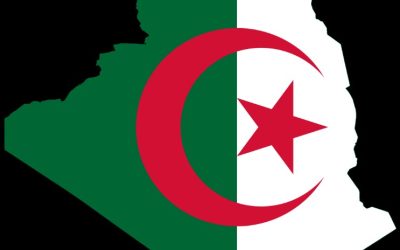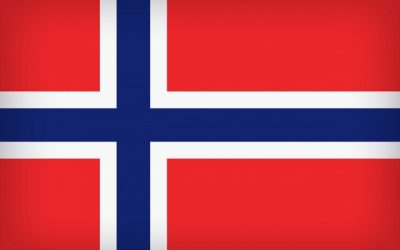Overview of Algeria’s Borders
Algeria is located in North Africa and is known for its extensive and diverse borders. It shares land borders with several countries, making it a key geographical and political hub in the region. The country borders Tunisia to the northeast, Libya to the east, Niger to the southeast, Mali and Mauritania to the southwest, Western Sahara to the west, and Morocco to the northwest. Additionally, Algeria has a Mediterranean coastline to the north, providing it with access to the Mediterranean Sea. These borders highlight Algeria’s strategic position, blending the Sahara Desert in the south with fertile coastal plains in the north. The borders with neighboring countries have influenced Algeria’s regional relationships, trade, and security policies over the years. Understanding Algeria’s borders is essential for grasping its role in North African geopolitics and regional stability.
Geographical Boundaries
Algeria, located in North Africa, is defined by its extensive geographical boundaries that shape its borders with neighboring countries. These borders not only demarcate political territories but also influence cultural, economic, and social interactions within the region. Understanding Algeria’s boundaries provides insight into its regional relationships and strategic significance in Africa and beyond.
Northern Border: Mediterranean Sea Coastline
Algeria’s northern border is defined by its extensive Mediterranean Sea coastline, stretching approximately 1,200 kilometers. This coastal boundary provides Algeria with strategic access to maritime routes and plays a significant role in its trade, economy, and regional relations. The Mediterranean Sea coastlines are characterized by a variety of geographical features, including sandy beaches, rocky promontories, and port cities that serve as important hubs for commerce and cultural exchange. The coastline borders several key Mediterranean countries, facilitating interactions across the region.
Eastern Border: Tunisia
Algeria shares its eastern border with Tunisia, forming a significant part of its northeastern boundary. This border region is characterized by a mix of desert landscapes and mountainous terrains, reflecting the diverse geography of both countries. Historically, the border has been an important factor in regional relations, trade, and cultural exchanges between Algeria and Tunisia. The boundary line is defined through a combination of natural landmarks and agreed-upon demarcations, facilitating movement and cooperation between the neighboring nations.
Western Border: Morocco
Algeria shares its western border with Morocco, forming a significant part of its geographical boundaries in North Africa. This border region is characterized by diverse terrains, including desert and mountainous areas, reflecting the varied landscape of both countries.
- The border between Algeria and Morocco is approximately 1,504 kilometers (935 miles) long.
- It stretches from the Mediterranean coast in the north to the intersection with Western Sahara in the south.
- The border area is often marked by rugged terrain, desert plains, and mountain ranges such as the Atlas Mountains near the border region.
- Due to political tensions, the border remains largely closed or heavily monitored at various points.
- The region holds strategic importance for both countries, impacting trade, security, and regional stability.
Southern Border: Niger and Mali
Algeria shares its southern border with Niger and Mali, forming an extensive frontier in North Africa. These boundaries are characterized by vast desert landscapes, including parts of the Sahara, which serve as natural separators between the countries. The border regions are often arid and sparsely populated, with some areas designated as transition zones that facilitate cross-border movement of nomadic groups and local communities. These boundaries are also significant for security and trade, with ongoing efforts to strengthen border control and foster cooperation among the neighboring nations.
Southeastern Border: Libya
The southeastern border of Algeria is defined by its extensive boundary with Libya, covering a vast desert region that forms a natural and political frontier between the two countries. This border zone runs through the Sahara Desert, comprising rugged terrain, sand dunes, and uninhabited areas, which historically facilitated trade and migration routes. The border is characterized by minimal physical demarcation, relying mainly on international agreements to delineate the shared boundary. This region holds strategic significance for both nations, influencing geopolitical relations, border security, and cross-border cooperation efforts. The southeastern border also plays a crucial role in regional stability and energy resource management given the proximity to Libya’s oil and gas fields. As part of Algeria’s extensive national borders, this boundary underscores the country’s geographic span from the coast to the inland deserts, emphasizing its connection with neighboring countries in North Africa.
Border Lengths and Geographical Features
Algeria is a vast North African country characterized by diverse geographical features and extensive borders shared with multiple nations. Its borders play a crucial role in shaping its political, economic, and cultural interactions with neighboring countries. Understanding the length and nature of Algeria’s borders, as well as the prominent geographical features along these boundaries, provides valuable insights into the country’s regional relationships and landscape diversity.
Total Length of Borders
Algeria shares extensive borders with multiple countries across North Africa, totaling approximately 6,353 kilometers in length. Its borders are characterized by diverse geographical features, including vast deserts, mountain ranges, and semi-arid plains. The northern border adjacent to Tunisia and Libya features rugged terrain and mountain ridges, while the southern and southwestern borders with Mali, Niger, and Mauritania extend into the Saharan desert, forming some of the world’s most expansive arid regions. The eastern border with Libya also includes desert landscapes and mountain zones, creating significant geographical diversity along Algeria’s perimeter. These varied features influence regional climate, security, and cross-border interactions, making Algeria’s borders a key aspect of its geographical and strategic landscape.
Mountain Ranges and Deserts in Border Areas
Algeria’s borders are extensively defined by various geographical features, including mountain ranges and deserts that serve as natural barriers and influence border delineation. These physical features play a significant role in shaping the country’s boundaries and have historical, cultural, and strategic importance.
Border lengths in Algeria are varied, with the country sharing borders with multiple nations in North Africa. The physical geography of these borders is characterized by diverse landscapes that affect travel, border security, and regional interactions.
Mountain ranges along Algerian borders include the Atlas Mountains, which extend into neighboring countries such as Tunisia and Morocco. These ranges are rugged and serve as natural separations that historically influenced settlement patterns and border delineation.
Deserts, notably the Sahara, cover a substantial part of Algeria’s border areas, especially with Mali, Niger, and Libya. The vast expanse of desert acts as a natural barrier, providing both ecological challenges and strategic advantages in borders management.
- The Sahara Desert extends across southeastern Algeria, forming a harsh, arid boundary shared with Libya and Niger.
- The Tell Atlas runs along the northern border, demarcating boundary regions with Tunisia and Morocco with mountainous terrains.
- The Ahaggar and Tassili n’Ajjer plateaus are notable geographical features influencing borders with Niger and Mali.
- Mountain ranges serve as natural borders, reducing the need for extensive man-made boundary markers in many regions.
- Deserts contribute to the sparsity of border crossings and influence border security measures due to their inhospitable terrain.
Border Terrain and Natural Barriers
Algeria’s borders are defined by a combination of lengthy land boundaries that separate it from neighboring countries and diverse geographical features that influence border terrain and natural barriers. The country’s northern border is characterized by the Mediterranean coastline, providing a natural maritime boundary that supports economic activities such as trade and fishing. To the east and southeast, Algeria shares extensive land borders with Tunisia and Libya, where the terrain transitions from coastal plains to rugged mountains and desert plateaus. The eastern border region features the Saharan desert, which acts as a natural barrier with vast, arid expanses that hinder movement and serve as a natural demarcation line.
The southern and southwestern borders with Niger and Mali are predominantly defined by the Sahara Desert, one of the largest natural barriers in the world. This expansive desert presents a harsh terrain with sand dunes, gravel plains, and intermittent mountains, making border crossings challenging and significantly influencing security and migration patterns. The western border with Mauritania and Western Sahara also includes desert regions and rugged terrain, creating natural obstacles that impact transportation and border security. Overall, Algeria’s borders are shaped not only by political boundaries but also by these geographic features and natural barriers that have historically influenced the region’s boundaries, settlement patterns, and interactions with neighboring countries.
Political and Historical Context
The political and historical context of Algeria’s borders is deeply rooted in its colonial past and subsequent struggles for independence. The shaping of these borders was influenced by French colonization, which established territorial boundaries that eventually became the modern nation’s borders after gaining independence in 1962. Throughout its history, Algeria has experienced significant geopolitical changes, regional conflicts, and negotiations that have contributed to the current borders, reflecting its complex legacy of resistance, colonialism, and national identity.
Colonial Origins of Boundaries
The borders of Algeria are deeply rooted in its colonial history, particularly the period of French colonization which lasted from 1830 to 1962. During this time, colonial authorities drew administrative boundaries that often disregarded existing ethnic, cultural, and historical divisions, leading to artificial borders that did not reflect the indigenous populations’ social and political landscapes. The colonial powers prioritized establishing control and resource extraction, which resulted in arbitrary border delineations that later contributed to regional tensions and conflicts post-independence. The struggle for independence, culminating in the Algerian War (1954-1962), was also shaped by these imposed boundaries, as national identity and sovereignty became central to resisting colonial rule and territorial coherence. After gaining independence in 1962, Algeria inherited these colonial boundaries, which continue to influence its political and social structure today, occasionally fueling debates on border adjustments and regional autonomy within the wider Maghreb region.
Border Agreements and Disputes
The borders of Algeria have been shaped by a complex political and historical context, influenced by colonial legacies, regional conflicts, and international agreements. These borders have undergone numerous changes due to wars, treaties, and negotiations, reflecting the country’s struggle for sovereignty and territorial integrity.
Historically, Algeria’s borders were primarily determined during French colonial rule, which drew artificial boundaries that often disregarded indigenous communities and ethnic groups. Following independence in 1962, Algeria sought to affirm its territorial sovereignty through diplomatic means and border treaties, while also facing disputes with neighboring countries over certain regions.
Key border agreements and disputes include:
- Algeria-Libya border agreement of 1956, which aimed to define border boundaries, although some areas remained contentious.
- The Western Sahara conflict, where Algeria supports the Sahrawi people’s push for independence, leading to tensions with Morocco over territorial claims.
- Disputes with Tunisia over border demarcation, which have been addressed through treaties and joint commissions to prevent conflicts.
- Algeria’s border with Niger and Mali, which is predominantly defined by colonial-era agreements, though security concerns and the rise of militant groups have occasionally challenged the stability of these borders.
- Ongoing negotiations and international efforts to resolve border issues and solidify Algeria’s territorial boundaries, emphasizing regional cooperation and respect for international law.
Impact of Historical Events on Border Demarcation
The political and historical context of Algeria plays a crucial role in shaping its borders, reflecting a complex legacy of colonization, independence struggles, and regional conflicts. The borders of Algeria have been influenced significantly by colonial policies, particularly French imperialism, which drew boundaries without regard to ethnic, tribal, or cultural considerations. Over time, the decolonization process and subsequent negotiations have led to the current territorial divisions, but underlying tensions and historical disputes continue to influence border delineation and regional stability.
- Colonial Legacy: French colonization established administrative boundaries that often disregarded indigenous social and tribal structures, leading to artificial borders that persisted after independence.
- Independence Movements: Algeria’s war of independence (1954-1962) was driven by a desire to reclaim sovereignty, which included redefining borders and asserting national sovereignty.
- Regional Conflicts: Post-independence disputes, particularly over border areas like Western Sahara and neighboring Libya, have affected territorial stability and diplomatic relations.
- Decolonization and Negotiation: Negotiations with France and neighboring countries aimed to finalize borders, but some discrepancies and conflicts remained unresolved, influencing border arrangements.
- Impact of Historical Events: Critical events such as the Algerian War of Independence, the Green March, and regional Arab-Israeli conflicts have indirectly impacted border policies and regional alignments.
Security and Border Management
Security and border management are vital components in maintaining the sovereignty and stability of a nation. In the context of Algeria, a country with extensive and diverse borders, effective strategies are essential to address challenges such as illegal immigration, smuggling, and security threats. Ensuring the integrity of Algeria’s borders not only safeguards its citizens but also promotes regional stability and cooperation.
Border Control Measures
Algeria shares extensive borders with multiple countries, including Tunisia, Libya, Niger, Mali, Mauritania, Western Sahara, and Morocco. Effective border control measures are essential for maintaining national security, controlling illegal immigration, preventing smuggling, and combating terrorism. Algeria employs a combination of physical barriers, surveillance technology, and border patrol units to monitor its borders and prevent unauthorized crossings.
Border control measures in Algeria include the use of advanced electronic surveillance systems such as cameras, drones, and sensors to monitor border areas continuously. Additionally, border patrol personnel are deployed along strategic points to conduct routine inspections and respond promptly to suspicious activities. Algeria also cooperates with neighboring countries through bilateral security agreements to enhance regional stability and facilitate intelligence sharing.
To strengthen security, Algeria has established border outposts and checkpoints equipped with modern technology and staffed by trained personnel. These measures aim to detect and prevent illegal crossings, human trafficking, and the movement of illicit goods. Continuous efforts are made to upgrade border infrastructure, improve coordination among security agencies, and implement policies aligned with international security standards to safeguard national sovereignty and ensure regional peace.
Cross-border Security Challenges
Algeria’s borders are strategic and extensive, stretching across multiple neighboring countries in North Africa. Managing security along these borders presents significant challenges, including preventing illegal crossings, smuggling, human trafficking, and unauthorized migration. The rugged terrain of the Sahara Desert complicates surveillance and patrol efforts, making it difficult to monitor remote areas effectively.
Cross-border security threats are often interconnected, involving terrorist groups, organized crime networks, and illicit trade routes that exploit border vulnerabilities. Algeria has intensified cooperation with neighboring countries and international partners to enhance border surveillance, intelligence sharing, and joint operations. Implementing advanced technology, such as drones and surveillance systems, plays a crucial role in strengthening security measures.
Despite these efforts, maintaining secure borders remains complex due to political, economic, and social factors, including cross-border ethnic ties and regional instability. Strengthening diplomatic relations and fostering regional cooperation are vital components toward addressing these cross-border security challenges and ensuring sustainable stability in Algeria and its neighboring states.
Border Surveillance Infrastructure
Algeria shares extensive borders with neighboring countries, making robust border security and surveillance infrastructure essential for safeguarding its sovereignty and preventing illegal crossings. The country has invested in modern border surveillance technology, including CCTV cameras, unmanned aerial vehicles, and sensor-based detection systems, to monitor border areas effectively. These measures help identify unauthorized crossings, smuggling activities, and potential security threats in real-time. Additionally, Algeria’s border management strategies emphasize collaboration with neighboring nations to enhance intelligence sharing and joint operations. Strengthening border infrastructure not only secures national borders but also promotes regional stability and security in North Africa.
Border Economy and Cultural Connections
The border regions of Algeria serve as vital crossroads where economic activities and cultural interactions intertwine, shaping the nation’s regional dynamics. These areas foster unique connections between local communities and neighboring countries, promoting trade, cooperation, and cultural exchange. Understanding the border economy and cultural ties is essential to grasping the broader social and economic landscape of Algeria’s frontiers.
Trade and Commerce at Borders
Algeria shares borders with multiple countries, including Tunisia, Libya, Niger, Mali, Mauritania, Western Sahara, and Morocco, creating a diverse landscape for economic and cultural interactions. These borders serve as vital corridors for trade, facilitating the movement of goods, services, and people across regions, thereby boosting local economies and fostering regional development. Cultural connections are also prominent at Algeria’s borders, where blending traditions, languages, and customs enrich the social fabric of communities. Cross-border markets and trade routes enable the exchange of cultural practices and strengthen interpersonal ties, despite occasional political or geographical challenges. Overall, Algeria’s borders are crucial hubs for economic activity and cultural integration, playing a significant role in shaping the country’s regional relationships.
Cross-border Cultural and Ethnic Links
Algeria shares extensive borders with several countries, including Tunisia, Libya, Niger, Mali, Mauritania, Western Sahara, and Morocco. These borders facilitate significant economic exchanges and cultural interactions that shape the region’s dynamics. Cross-border trade plays a crucial role in local livelihoods, especially in border towns where markets for goods, livestock, and services thrive. Additionally, cultural and ethnic links are deeply embedded among communities living on either side of Algeria’s borders, fostering a sense of shared identity and heritage.
Many ethnic groups, such as Arab-Berbers, Tuareg, and other indigenous communities, navigate across borders, maintaining familial ties, language, and traditions despite political boundaries. These connections often lead to vibrant cultural exchanges, including music, dance, culinary practices, and religious traditions, which reinforce a collective cultural identity. The cross-border interactions contribute to regional stability and cooperation, although political and security issues can sometimes impact these cultural and economic connections.
Overall, border regions in Algeria embody a complex web of economic and cultural links that continue to influence social and political relations in North Africa. Understanding these connections is essential for fostering regional development and promoting peace and mutual understanding among neighboring countries.
Migration and Border Mobility
The borders of Algeria play a significant role in shaping its economy and cultural relationships with neighboring countries. These borders facilitate trade, influence migration patterns, and foster cultural exchanges that impact both Algeria and its neighbors. Understanding these elements reveals the complex interconnections that define regional stability and development.
Border crossings between Algeria and its neighboring countries, such as Tunisia, Libya, Niger, Mali, Mauritania, Western Sahara, and Morocco, serve as vital links for commerce and migration. These transit points enable the movement of goods, people, and ideas, thereby contributing to economic growth and cultural diversity.
- Trade and Commerce: Algeria’s borders enable the exchange of goods like agricultural products, textiles, and minerals, boosting local economies and creating employment opportunities.
- Migration Flows: Movement across borders includes labor migration, diaspora communities, and refugees, which influence demographic patterns and social dynamics.
- Cultural Interactions: Cross-border exchanges foster shared traditions, language, and customs, enriching the cultural fabric of the region.
- Security and Border Control: Managing migration and trade requires effective border security measures to prevent illicit activities and ensure regional stability.
- Border Development Initiatives: Collaborative projects aim to improve infrastructure and promote peaceful relations among bordering nations, enhancing mobility and economic prospects.





0 Comments